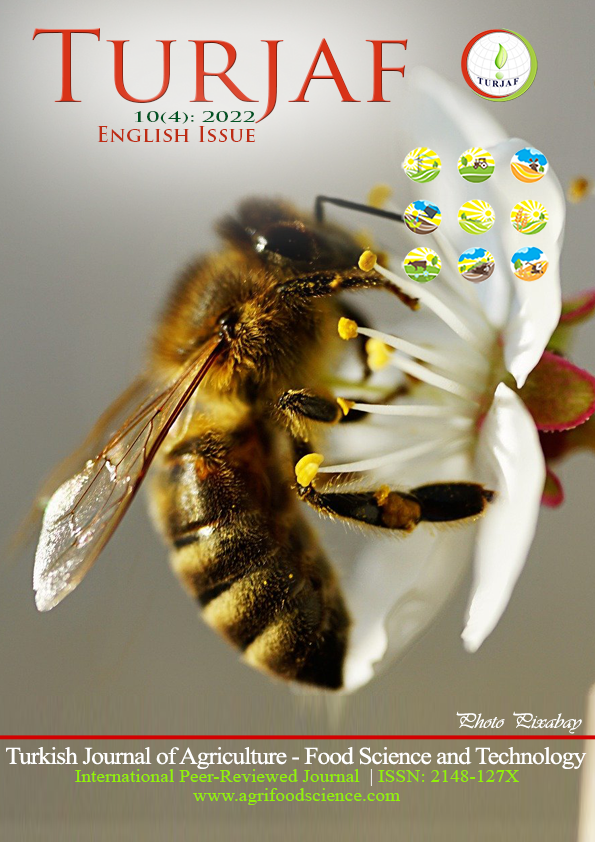Effects of Cricket Addition on the Chemical, Functional, and Sensory Properties of Complementary Formulation from Millet Flour
DOI:
https://doi.org/10.24925/turjaf.v10i4.508-516.4414Anahtar Kelimeler:
Millet- cricket- complementary food- chemical composition- functional properties- sensory propertiesÖzet
The effect of cricket addition on the proximate composition, mineral compositions, functional and sensory properties of complementary food formulated from millet was studied. The result of the chemical composition showed significantly increase in the protein and fat level of the formulated complementary food (9.28±0.16 - 20.20±0.07) % and (3.65±002 - 8.12±0.08) %, respectively. However, a significant decrease in the carbohydrate level (75.61±0.03 - 60.44±0.31) g/100g was observed. Evaluation of functional properties showed that cricket addition did not affect the bulk density but increased the water absorption (2.46±0.05), Emulsion (38.02±0.40%), foam (6.00±0.00), gelation (20.00±0.00%) capacities and pH (6.20±0.02). The mineral contents including Fe, Ca, Na, and K of the food ranged from 7.54±0.10 - 10.25±0.05 mL/100g, 30.35±0.15 - 34.98±0.10 mL/100g, 9.35±0.29 - 14.47±0.06 mL/100g and 30.92±0.03 - 56.40±010 mL/100g respectively increasing with increased addition of cricket flour The formulated samples were rated higher for taste, colour, flavour, texture and the overall acceptability than the control. In general sample 513 containing 75:25 cricket: millet flour showed more improvement than other formulated samples and most acceptable in terms of taste, flavour mouth feel and overall acceptability. Adding cricket flour to millet flour as complementary food would help in addressing protein energy malnutrition in children.İndir
Yayınlanmış
2022-04-30
Nasıl Atıf Yapılır
Simeon, E. I., Basiru Danjuma, A., & Momoh, A. (2022). Effects of Cricket Addition on the Chemical, Functional, and Sensory Properties of Complementary Formulation from Millet Flour. Türk Tarım - Gıda Bilim Ve Teknoloji Dergisi, 10(4), 508–516. https://doi.org/10.24925/turjaf.v10i4.508-516.4414
Sayı
Bölüm
Araştırma Makalesi
Lisans
Bu çalışma Creative Commons Attribution-NonCommercial 4.0 International License ile lisanslanmıştır.









